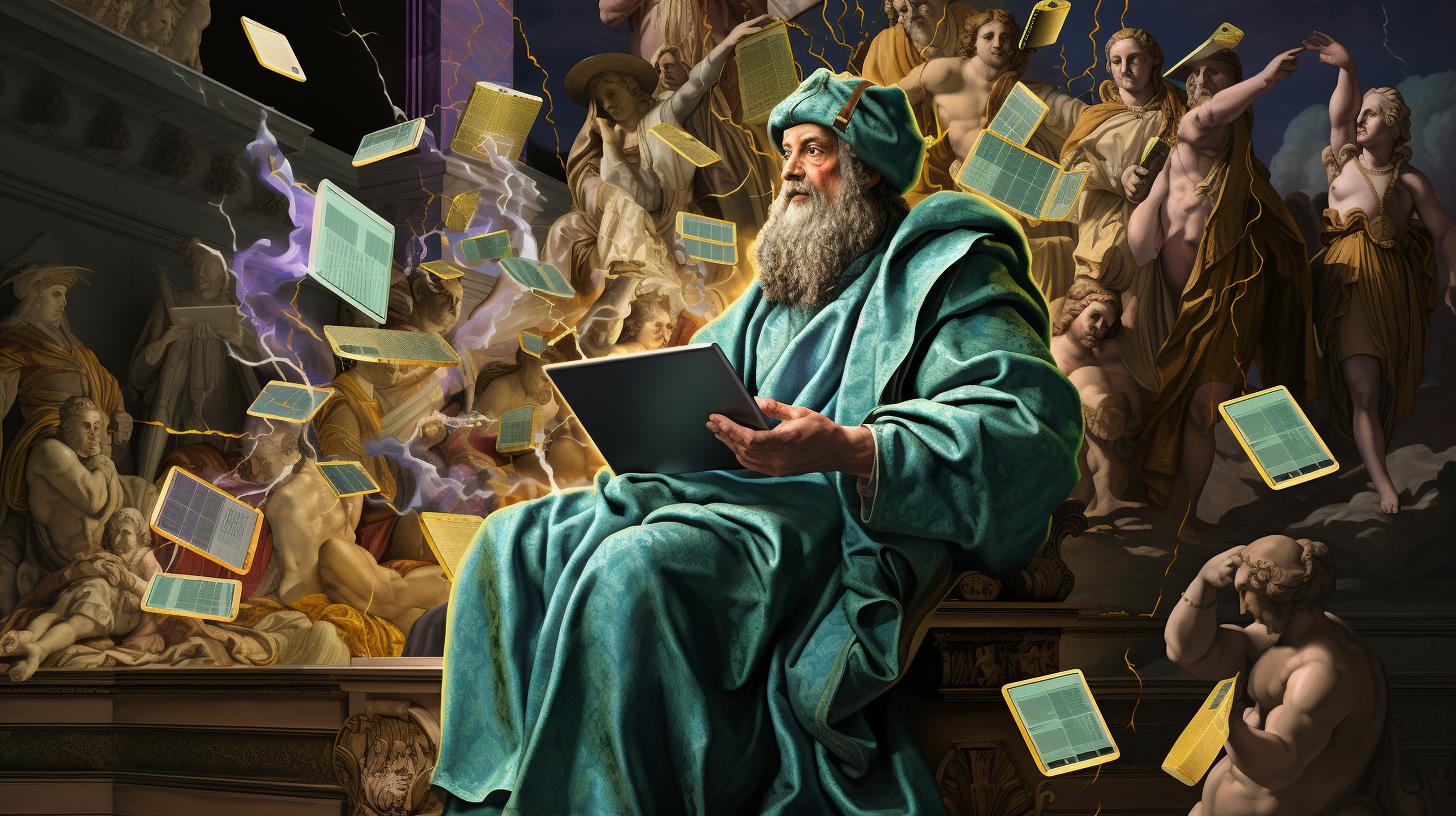In an era where the brushstrokes of Picasso and the chisels of Michelangelo are lauded as the pinnacle of artistic achievement, a brave new world is emerging, unearthing a modern-day Renaissance that is just as vibrant and revolutionary as its predecessor. In this world, art is not confined to canvas or marble; instead, it exists in the boundless digital realm, where Non-Fungible Tokens (NFTs) are redefining the concept of collectible art.
‘The New Renaissance’ isn’t marked by frescoes or sculptures, but by unique digital pieces that are igniting the imaginations of artists and collectors alike. These digital assets range from images and videos to interactive experiences, each one as distinct as the coded ‘DNA’ it carries, ensuring authenticity and ownership in a way previously impossible in the digital world.
This burgeoning movement is not just about changing how we buy or sell digital content; it’s about transforming it into something as coveted and valued as the most sought-after physical artworks. The economy that has surfaced around NFTs has taken both the art world and the financial markets by storm, bringing with them a palette of opportunities and challenges.
Artists who once struggled to claim ownership over their digital creations are now finding a renaissance of their own. The permanence offered by blockchain technology means their digital sculptures and tapestries cannot be changed, stolen, or replicated without consent. An artist’s work can finally be tethered to them forever, allowing for proper recognition and compensation where due.
But what about the buyers? Collectors are drawn to these digital treasures for various reasons. For some, it’s the investment potential, the thrill of owning and speculating on digital masterpieces just as one would with traditional art. Others relish in the exclusivity, the idea that their acquisition is one of a kind, viewed and exhibited in virtual galleries, or perhaps displayed as part of a digital environment or personal ‘metaspace’.
The parallels between the original Renaissance and today’s digital uprising are evident. Just as the Medici family of Florence patronized the arts, creating a vibrant atmosphere for creativity and innovation, modern-day tech moguls and cryptocurrency veterans are the new patrons of digital arts, funneling their digital currency fortunes into the creation and collection of NFTs.
We are witnessing a shift where ‘Art’ is no more constrained by physicality, but rather liberated by code. From crypto-cities to personal profiles, NFTs have infiltrated every facet of our digital lives. Tech-savvy creatives are crafting experiences that are not only visually delightful but are rich with interactive elements that engage viewers in unprecedented ways.
The conversation doesn’t end with art. As we grasp the wide-reaching tendrils of the NFT phenomenon, let’s not forget the realms of digital fashion and virtual goods, topics we’ve touched on in previous issues. NFTs don’t just create art; they craft ‘digital wearables,’ impacting sustainability and individual expression. They are also not just collectibles; they lend utility, evolving into tickets, memberships, and loyalty, reshaping notions of value and ownership.
And it doesn’t stop there. Challenges arise, inevitably so. The digital world is faced with concerns over the environmental impact, given the energy consumption needed to maintain the blockchain. There are ethical questions about the ‘copy-paste’ culture and the authenticity of digital ownership. Even so, the march towards a world where digital assets stand alongside marble statues and oil paintings as defining cultural artifacts is steady and unswayed.
The New Renaissance is a celebration of beauty and complexity, a harmonious blend of the ancient urge to create and the futuristic canvas provided by technology. It champions a world where art is no longer seen as a static collection but as a dynamic, ever-evolving legacy.
In closing, the art world’s newest frontier is a dance between old-world artistry and new-world technology. The digital canvas is vast, and the potential for what can be created and how it can be experienced is only beginning to be realized. As the sun rises over this digital Renaissance, we find ourselves at the dawn of a new era in art, and indeed, a new chapter in human expression.
